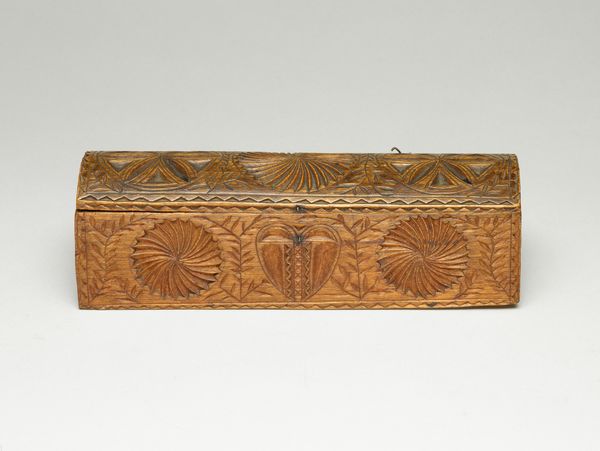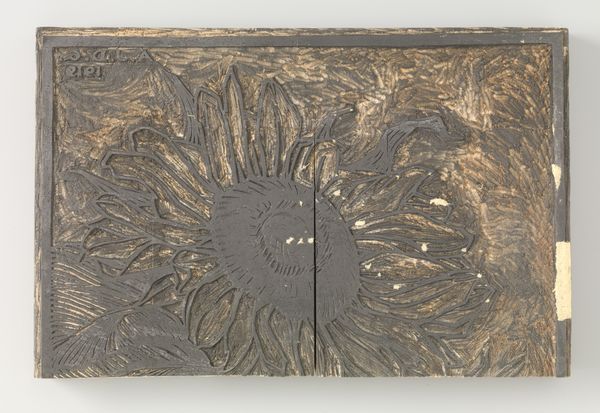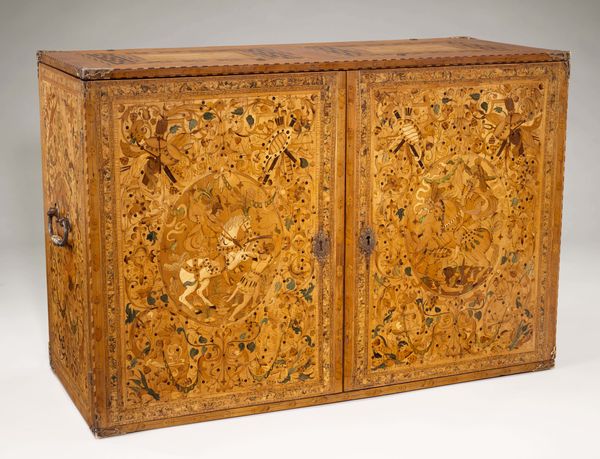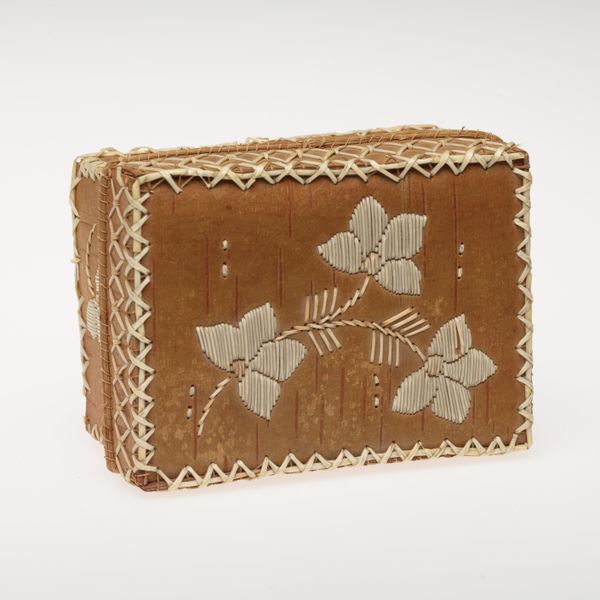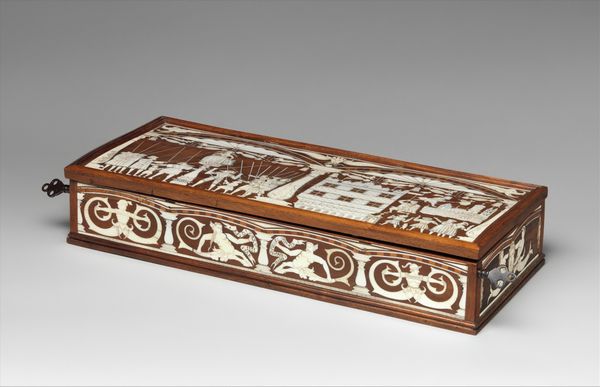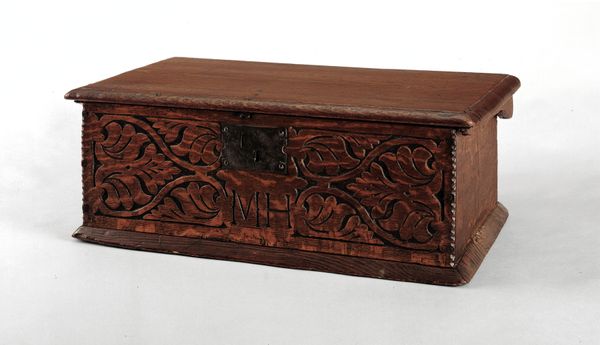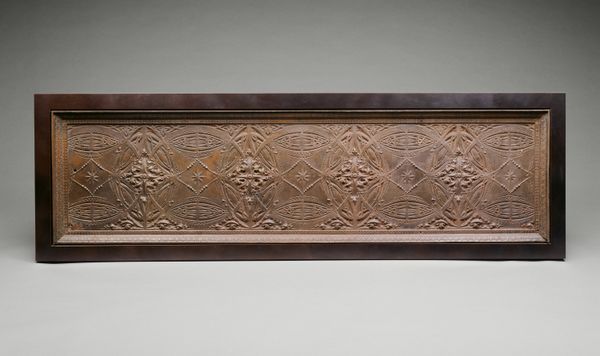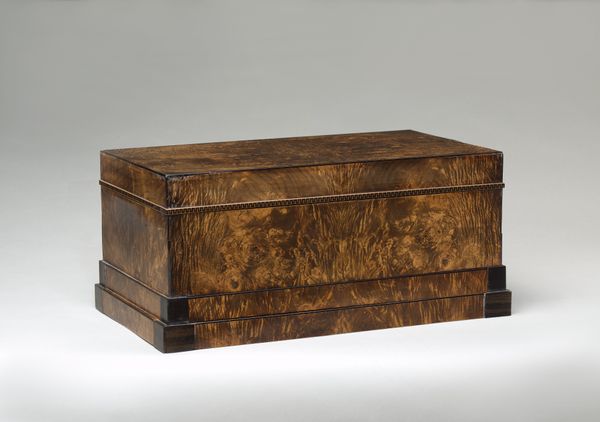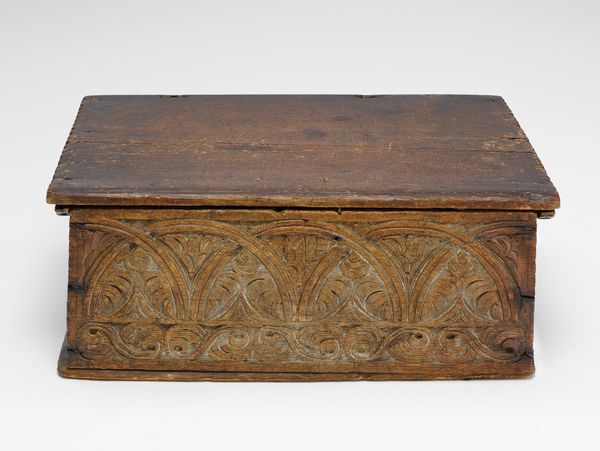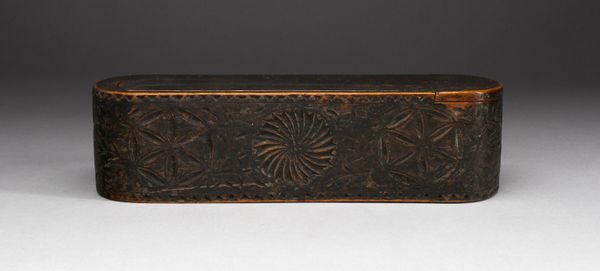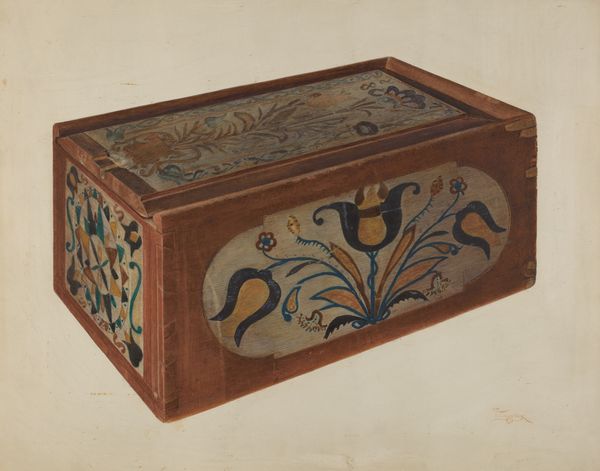
carving, relief, sculpture, wood
#
carving
#
sculpture
#
relief
#
folk-art
#
sculpture
#
wood
#
decorative-art
Dimensions: 8 × 15.2 ✕ 3.8 cm (3 1/8 × 6 ✕ 1 1/2in.)
Copyright: Public Domain
Editor: Here we have a cookie mold, dating from between 1790 and 1875. It’s an anonymous piece made of carved wood. I'm struck by how rustic and charming the carvings are. What story does this little piece tell from a historical perspective? Curator: It's tempting to simply see it as folk art, something quaint. But remember, even the most domestic object can speak to wider societal structures. Who was baking these cookies? For what occasions? Were they for family celebrations, community events, or perhaps even commercial sale? Think about the materials. Wood was readily available, making this form of craft accessible, but the time investment in carving reveals the importance of the practice itself. Editor: So, beyond just a tool for making cookies, it offers insight into social dynamics? Curator: Precisely! It speaks to gender roles, potentially, if women were primarily the bakers. It alludes to economic structures—could surplus production have been sold? It could have been decorative beyond its use; items such as this one made life beautiful through practical carving, thereby showcasing wealth. It also gives hints to trade; what kind of food ways made people make these cookies? What social status did these goods serve? Think of the role baking plays in holidays or festivals still today. Editor: The repetition of the design, the bird and stars, does that signify something about this cultural context as well? Curator: Absolutely. The motifs, perhaps symbolizing freedom or prosperity, were repeated. Think of those as powerful political or social values this community identified with, or hoped to invoke, expressed in this everyday object. Does the presence of a similar design mean something between communities? How does folk art communicate messages that go beyond what one community finds meaningful? And were these uniquely made in the area where the artist lived? Editor: I hadn't considered that a simple cookie mold could be such a rich source of information about the culture that created it. Curator: Exactly! The political, social, and economic life—even something as seemingly simple as a cookie mold—reflects this. The Art Institute’s commitment to showcase art such as this really puts these elements of social dynamics to the fore.
Comments
No comments
Be the first to comment and join the conversation on the ultimate creative platform.
